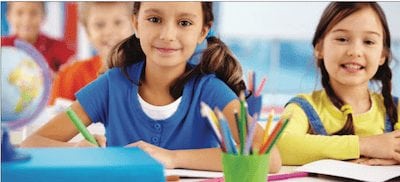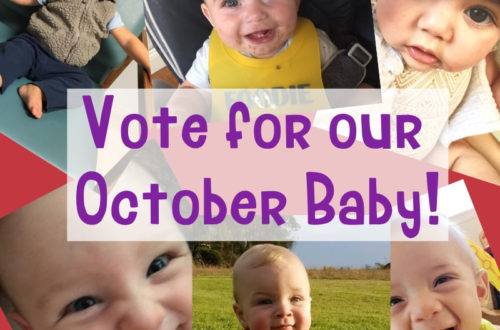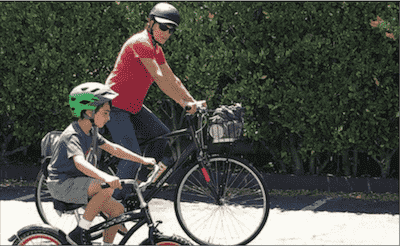
Five Ways to Build Your Child’s Critical Thinking Skills

By Jan Pierce
Everyday life involves a lot of prob- lem-solving. How do you encourage your children to get along with others? What’s the best way to help your child learn to manage money? Should you let your kids play video games and which ones are off-limits?
Without realizing it, you’re making logical decisions every day, and your kids need to learn how to make sound, logical decisions as well. Not just in their social and emotional lives, but in their reading, their writing, and their math and science explorations as well.
In short, the child who knows how to think logically will be a better student who comprehends his or her reading at a higher level, is able to think creatively to solve math and science problems, can communicate clearly and may even score higher on IQ tests.
Critical thinking is a complex skill learned over time. It involves being able to evaluate information for accuracy, interpret information, make predictions and inferences (conclusions based on evidence and reasoning), recognize fact vs. opinion and explain one’s thinking clearly.
So….it’s kind of hard. But, there are simple ways to build these logical thinking skills and you can begin to teach them in easy and fun ways. Here are some skills to work on at home to ensure your child is a strong, clear and logical thinker.
Analyze Analogies
Analogies are comparisons between two different things. They show a relationship between two items. The skill involved requires your child to first identify the relationship and then select the words demonstrating that relationship. The use of analogies increases understanding in virtually all areas of learning.
For example: day is to light as night is to ____. To solve this analogy, you first see that it is light in the daytime, then supply the opposite concept, dark, to night.
Or, book is to read as song is to _____. One reads a book. What do we do with a song? We sing it.
Analogies can demonstrate a number of relationships such as part to whole, opposites, cause and effect, or degree of intensity (cool is to freezing as warm is to ____.)
You can find workbooks with analogies in them or try the following websites to practice solving analogies. Kids enjoy doing them and you might create a family game in which you create your own analogy problems for one another.
www.funtrivia.com (search analogy quizzes)
www.study.com (search analogies)
www.learninggamesforkids.com (search under vocabulary games)
Create Categories and Classify Items
Sorting items for like attributes has always been fun for kids. For example you can sort buttons by color, size, number of holes, shape, etc. You can group animals into size, habitats, pets vs wild, stripes and no stripes or any other categories you create. And what kid wouldn’t want to sort M & M’s by color? You can go further and have
Children graph their information in a simple bar graph or pie chart. Classifying items builds both math and language skills and leads the way to simple science explorations.
www.mensaforkids.org (classifying animals)
www.kidsbiology.com (go to animal classification game)
www.education.com/worksheets/ graphing
Identify Relevant Information
In the process of problem-solving, it’s crucial to be able to pull out the information that matters. For example, consider the following sentence and the question to be answered: Tom had four quarters and three dimes. He also had a frog in his pocket. How much money does Tom have?
Obviously the frog in the pocket is not important to determining the correct amount of money. But selecting out only pertinent information can be quite challenging.
Go to www.study.com and search for relevant information in math. You’ll find videos followed by simple quizzes to practice this important skill.
Test Hypotheses
A hypothesis is an educated guess based on the current information known. Your child needs to be able to consider what is known and predict what might happen next, then test it out to see if the hypothesis was correct. This is an important skill in all of learning.
When your child is reading a book, ask: “What do you think will happen next?” Then after reading you can evaluate the accuracy of the prediction and determine why it was or wasn’t right.
In math and science it’s also important to make logical hypotheses and then go on to test and evaluate them. Go to www.study.com and search for “How do you Develop a Hypothesis.”
Distinguish Between Evidence and Interpretations of Evidence (Facts vs. Opinions)
In this day of information overload and cries of “fake news” all around, children must know how to recognize facts from the opinions of others. Facts are always true. Opinions are beliefs held by an individual and can vary from person to person. Help your child learn the difference between fact and opinion.
Watch the You Tube video on Fact and Opinion by BrainPop or visit www.pbskids.org/arthur/games/factsopinions
Critical thinking is a skill that grows over time. Ask your children to answer questions in their own words and clarify what they mean. Point out that some problems have more than one correct answer or more than one way of arriving at that answer. Help them see how emotions and motives can affect thinking. Encourage them to write out their answers to questions to build skill in coming up with clear and concise answers to problems.
Kids benefit when they have opportunities to practice problem solving using critical thinking skills. And don’t forget that old-fashioned conversation around the dinner table is a great time to pose questions that require clear, logical thinking.

You May Also Like

It’s Scary How Many People Buckle Up Wrong
August 28, 2018
September Baby Photo Contest
September 13, 2018

